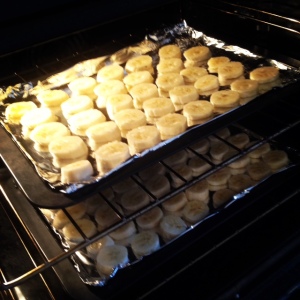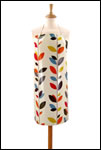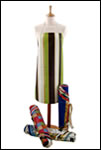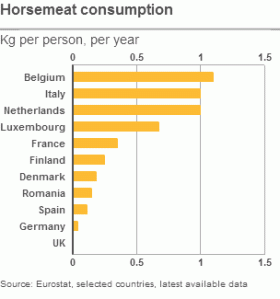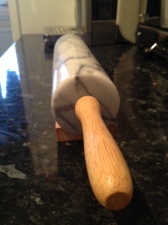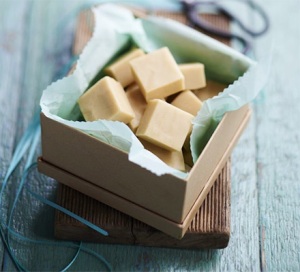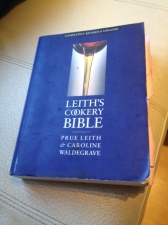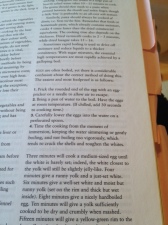I never really believed in the old adage “Buy cheap, buy twice” until we managed to kill a coffee machine every year for three years running! We gradually moved up the price scale each time (admittedly the very first one was a £20 machine so we had quite a way to go to get into the luxury range), until we found a coffee machine that has now lasted three years and is still going strong. I do get embarrassed though when someone asks the price, but in the long run it has saved us money by not going out to get our coffee-fix. Considering my first ever job was a barrista for a not very well known chain of coffee stands (usually found in train stations), I have had a long-term love affair with all things coffee. My husband has also had a long-standing reliance on caffeine given that he is a hospital doctor – between the two of us we make that machine work hard!
Sometimes it really is worth the extra spend on something that will last and save you time… or at least that’s what I tell myself. Here are some of my top picks which are definitely worth the extra spend.
The coffee machine – DeLonghi Prima Donna
- Don’t buy the fitted models – you’ll move and have to leave it behind, or it might break before the next kitchen refit and there is no guarantee that the newer models will fit in the space.
- Do think about counter-space – some of the top models are quite tall, so may not fit under your cupboards, and since many require you to load them with water/beans from the top, pulling it out and pushing it back will increase the likelihood of damage (either to the machine or your counter-top). An integrated bean-to-cup model enables you to choose your beans (and buy them in bulk), and grinds them for you, saving you the hassle of having a separate grinder on the counter.
- Do think about cost-per-use – the pod style coffee machines lock you into using their refills, which can get quite expensive if you are not interested in learning how to fill your own pods.
- My top pick: the DeLonghi Prima Donna (Amazon.co.uk link).
The Food Mixer – The Kenwood Chef
- Try not to get too influenced by form over function – the best models will last for 30 or more years (my mother still have two Kenwood Chefs that she was given as wedding presents – one for each of her marriages – which are still going strong 30-40+ years later). Look for fully metal gears as these motors will last, while those not made out of metal will likely break if you leave them on too long too often.
- Think about the attachments available – you may not want to make pasta or mince meat now, but you might in the future. Pick the model with the best selection of attachments.
- Think about who is going to clean it – one of the major reasons I picked the Kenwood over the KitchenAid is ease of cleaning. The Kenwood has simpler lines making wiping it down after use a doddle, while a friend who has a KitchenAid regrets her choice as it is constantly getting dirty and takes that bit longer to clean. You could always get a cover to minimise the mess though…
- My top pick: The Kenwood Chef Major Titanium (Amazon.co.uk link)
The Food Blender – The Vitamix
- Think about what you may make – the better models have the most powerful motors which won’t burn out on long blends. The cheaper ones may need time to cool down in between bursts of activity so you may be hanging around twiddling your thumbs – or you may break it!
- Think about noise levels though – these machines are LOUD. If you live somewhere with noise restrictions think about whether those neighbour relationships are good enough to withstand this…
- My top pick: The Vitamix Blender (Amazon.co.uk link)
- Second choice: The Berg Commercial Blender (Amazon.co.uk link)
The Toaster – Dualit New Gen
- Four slices of toast at a time and a warming rack for buns/pastries – this does the job of something a lot cheaper, but feels far more solid than the previous £40 toaster we had… This is definitely a luxury not a necessity, but such a lovely luxury…
- Amazon.co.uk link
The Slow Cooker – Crock-Pot Slow Cooker
- A digital timer really is worth the extra spend…
- Amazon.co.uk link
Things still on my wishlist to try:
- A food dehydrator – for the flirtation with raw eating
- A robot hoover – for dealing with the cat hair drifts that build up
- A vacuum sealer – for freezing home made ready meals
- A professional ice-cream maker (no need to freeze the bowl, unlike my great but noisy amateur ice-cream maker) – I think this one is obvious…
Related articles
- Christmas Wishlist for Foodies – Buy Cheap Buy Twice (theeducatedfoodie.wordpress.com)
- Christmas Gifts for Foodies (theeducatedfoodie.wordpress.com)

